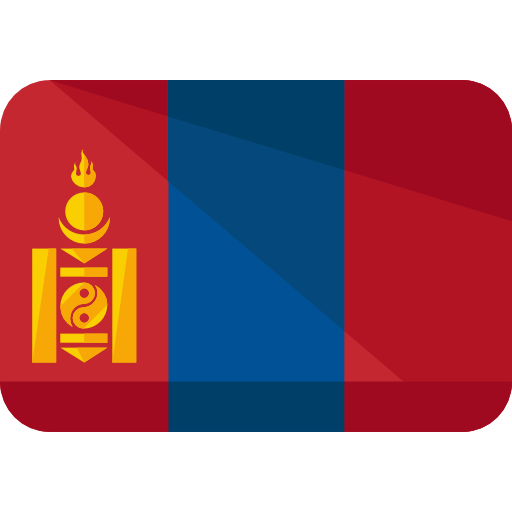First of the migrating birds have already arrived at lakes in Mongolia. Many can observe how those would relax from the long travel and flight. This time of the year is the most appropirate for bird viewers to observe how bird would pick up their couple, build their nests, lay their eggs and teach their chicks to fly. Let me introduce of the species of migrating birds that come to Mongolia.
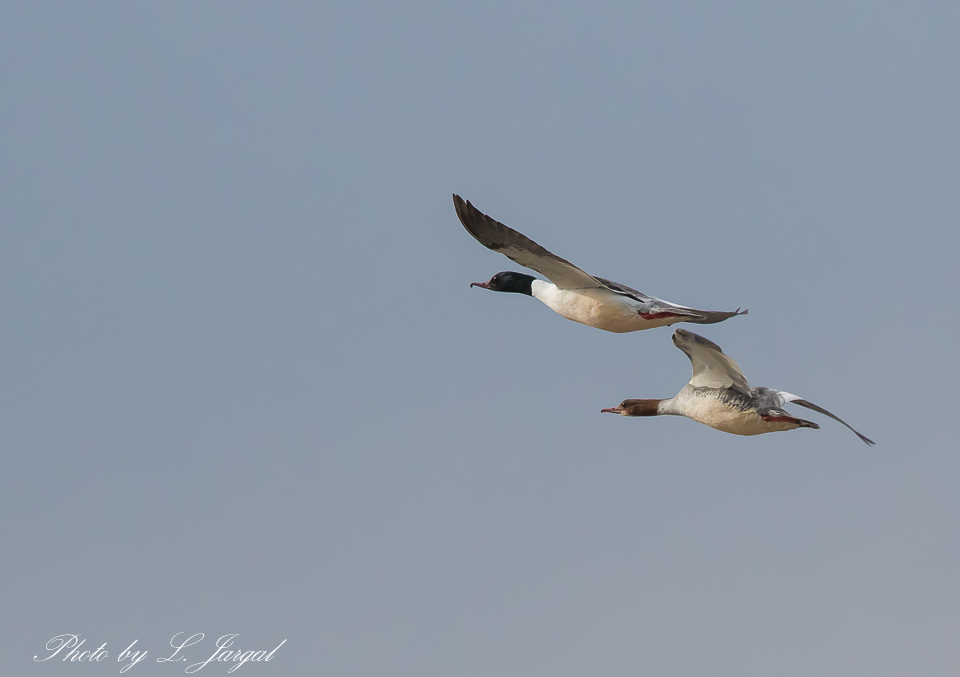
Goosander (Mergus merganser) is a large duck of rivers and lakes in forested areas of Europe, northern and central Asia, and North America. It eats fish and nests in holes in trees. It is 58–72 cm (23–28 in) long with a 78–97 cm (31–38 in) wingspan and a weight of 0.9–2.1 kg (2.0–4.6 lb).
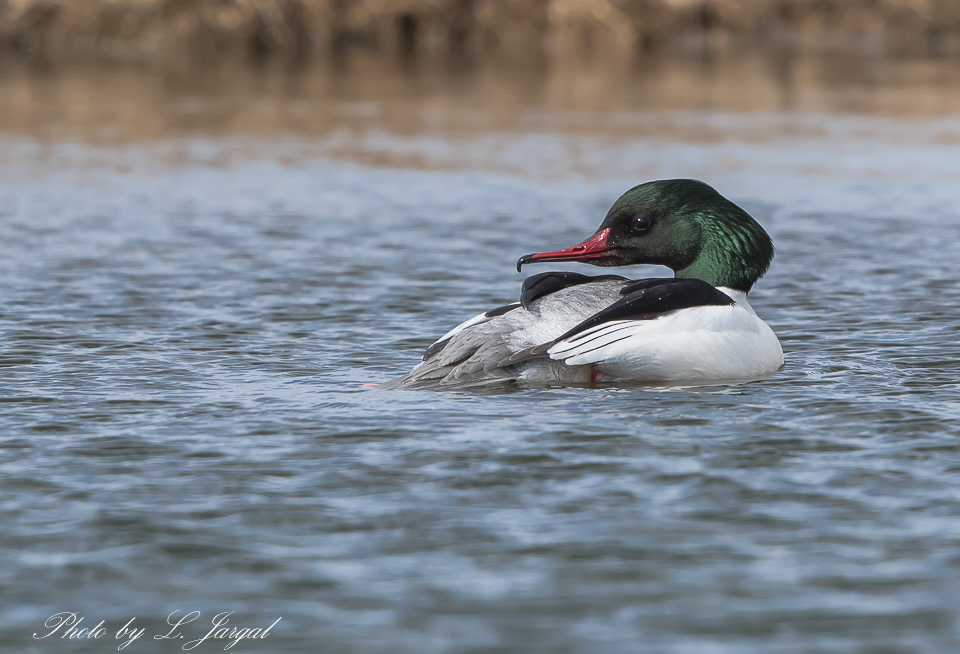
Adult males in breeding plumage are easily distinguished, the body white with a variable salmon-pink tinge, the head black with an iridescent green gloss, the rump and tail grey, and the wings largely white on the inner half, black on the outer half. Females are largely grey, with a reddish-brown head, white chin, and white secondary feathers on the wing. Like the other mergansers, these fish-feeding ducks have serrated edges to their bills to help them grip their prey; they are therefore often known as "sawbills". In addition to fish, they take a wide range of other aquatic prey, such as molluscs, crustaceans, worms, insect larvae, and amphibians; more rarely, small mammals and birds may be taken.
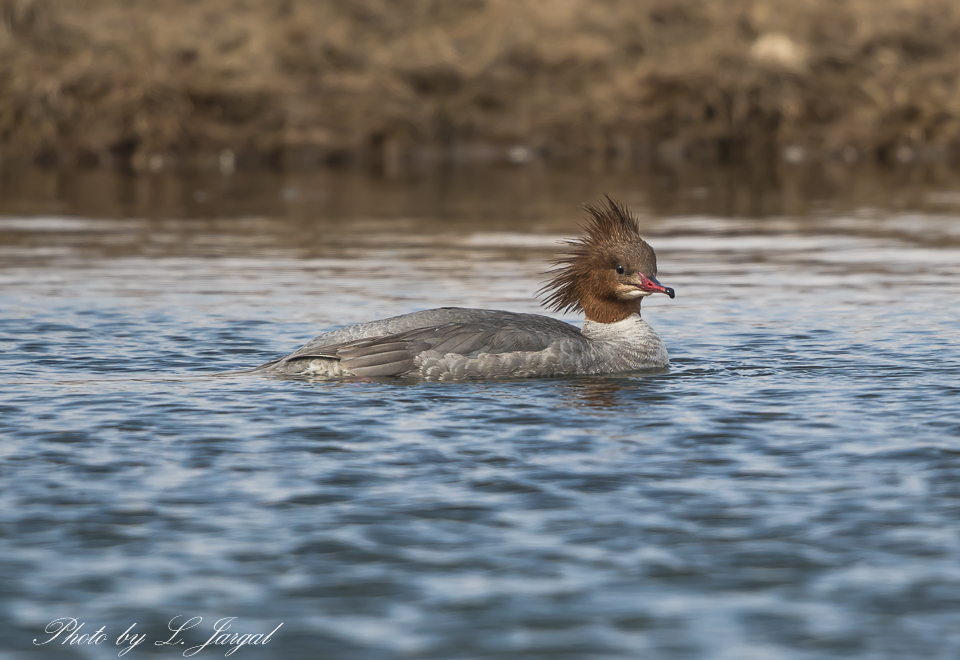
I have seen groups of Goosanders to float on Tuul and Kherlen rivers and catching their prey in water.
During their breeding period birds would roam in pairs, not in large groups. Although they would have picked their couple long before coming here many would still fight for the attention of female species with their dance. I had a chance to observe the pair of Goosander nearby Tuul river to the west of the city.
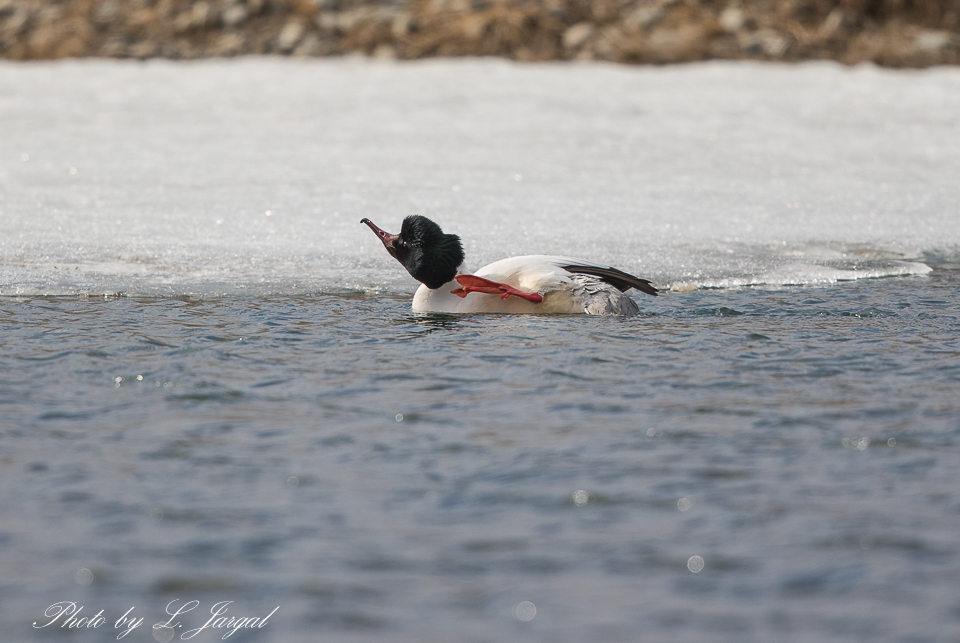
At spring the males will shine and add their attractiveness, which helps them to catch the attention of the female. Goosanders usually come back by the time when the ice breaks on the lakes and rivers. This male is trying to catch the attention by showing off his white chest and bright red wings, but with little success as the nearby female is not paying much attention.
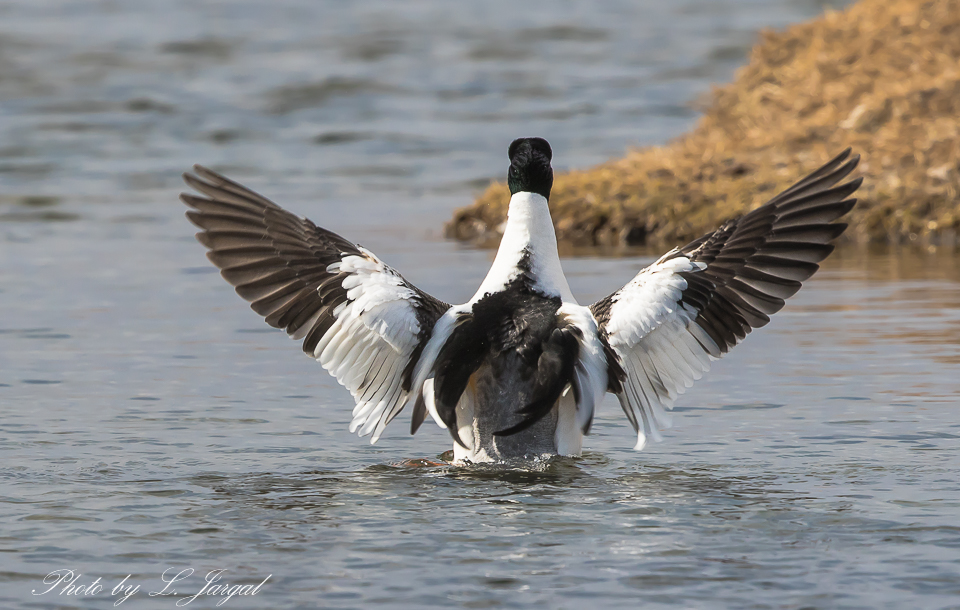
He would float around the female then stands afloat to show off his wingspan and hunterlike pose. Usually this act might be similar with drying of the wings after diving, but this time it conveyed completely different feel to it.
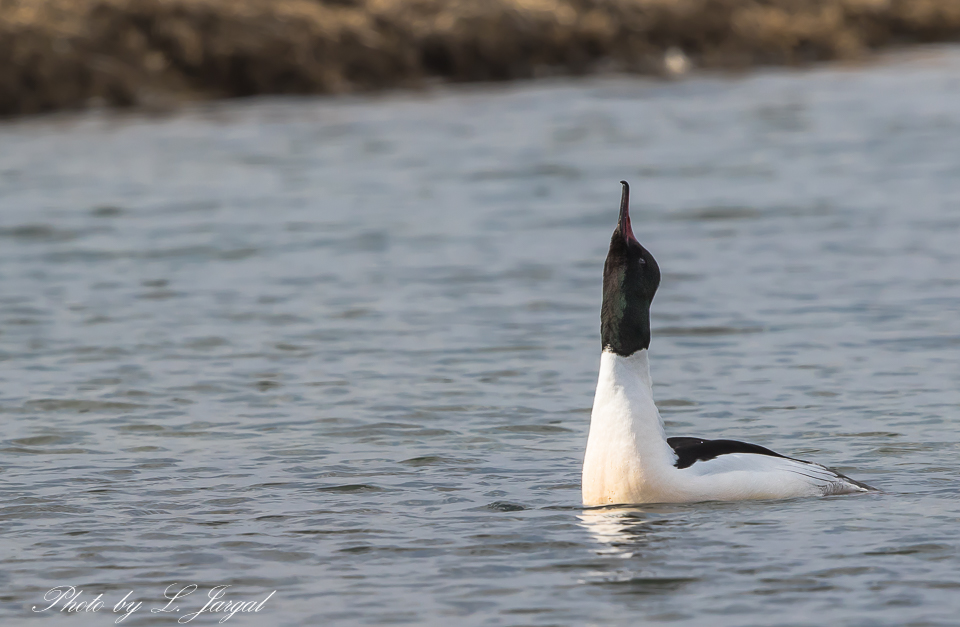
One of the definitive acts for Goosander is to point to the sky with its beak and stand still. Moreover, the male would play around by swimming across the water, while it was comparatively silent. But the female was still not paying much attention.
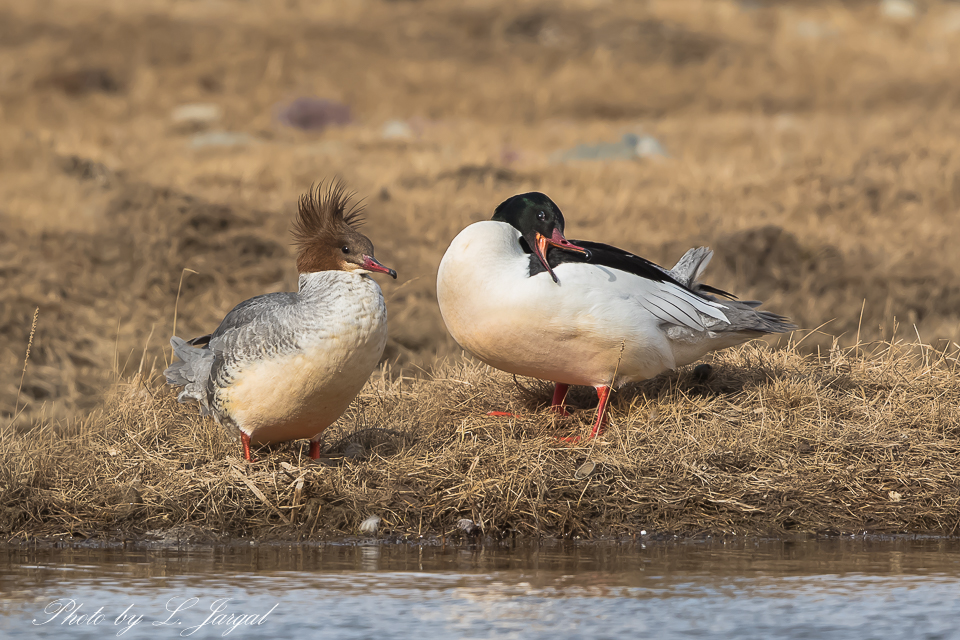
Without seeming success the male would go to the shore and dry himself one female would approach him from the back. It was as though he was mesmerized with her beauty and would show off his strong chest. Both would clean themselves.
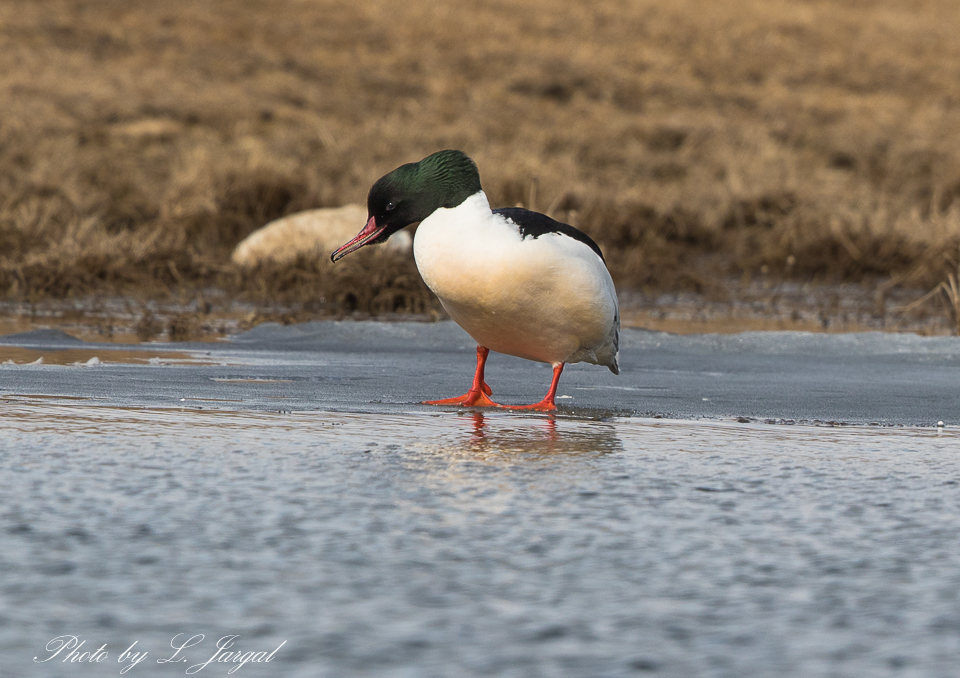
But suddenly another male would approach the two and come out at the nearby ice. Another gorgeous male with attractive features.
The male on the shore as if though was bothered with other would quickly approach other male to attack him.
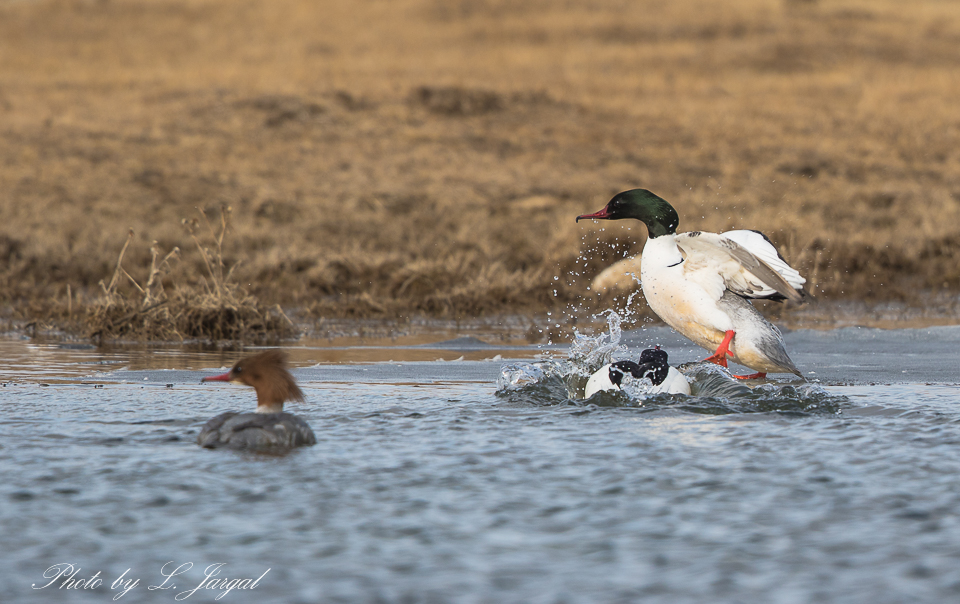
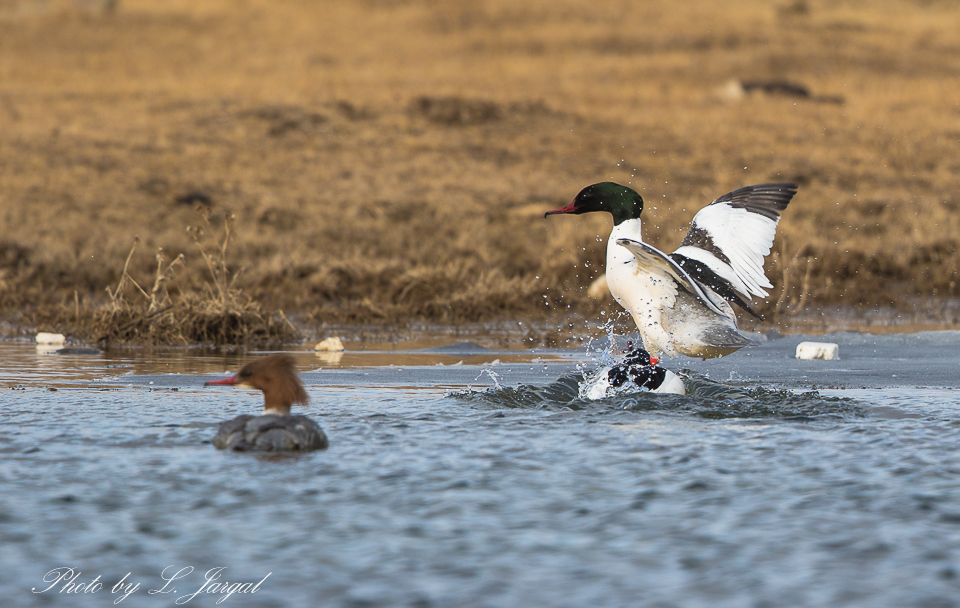 Though not very noisy, it attacked with splash. One female would follow them, but then will just float away as if though saying "oh those boys, always foolish".
Though not very noisy, it attacked with splash. One female would follow them, but then will just float away as if though saying "oh those boys, always foolish".

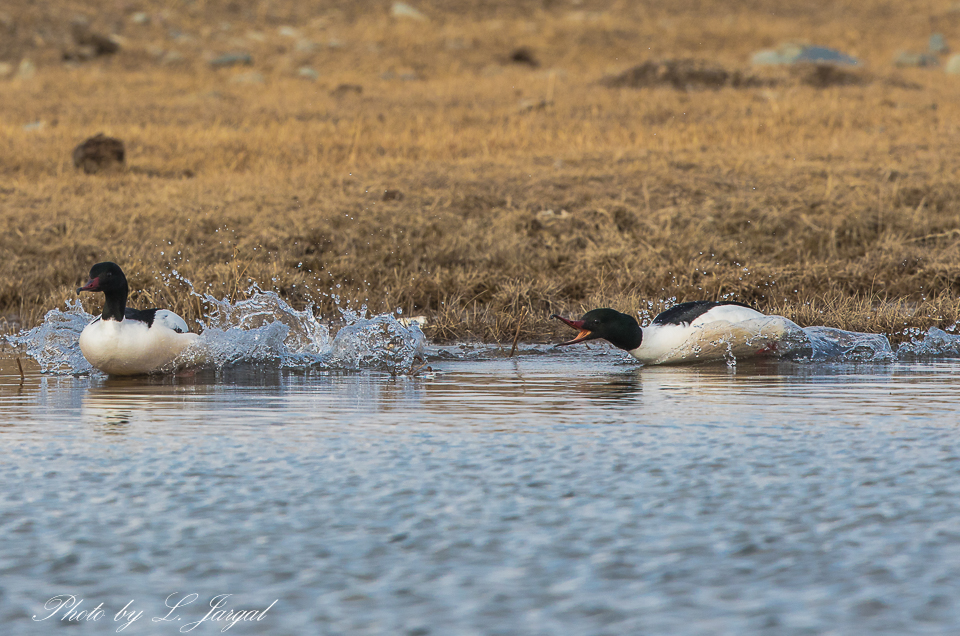
The competitor would leave the scene realizing his weakness. Few days later those to males would lay together as friends. It was implying that they would fight only for attention of the female, but will remain friends.
On the other hand, the winning male was playing with his lady proudly. Female was touching the male on the neck as if though trying to say that the choice has already been made. Soon enough those two would build their nest and lay their eggs.
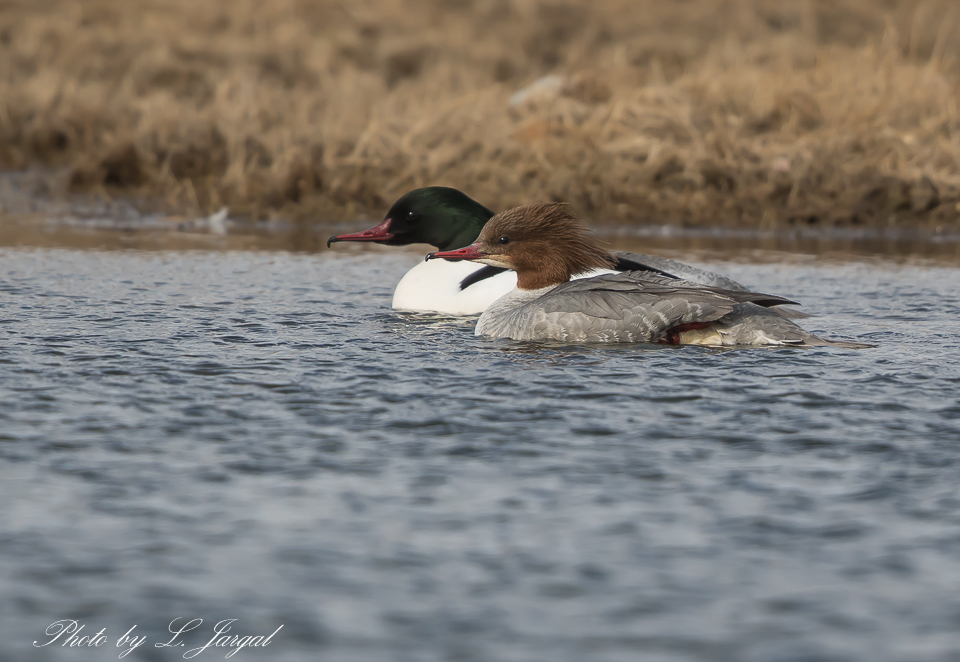
First of the migrating birds have already arrived at lakes in Mongolia. Many can observe how those would relax from the long travel and flight. This time of the year is the most appropirate for bird viewers to observe how bird would pick up their couple, build their nests, lay their eggs and teach their chicks to fly. Let me introduce of the species of migrating birds that come to Mongolia.

Goosander (Mergus merganser) is a large duck of rivers and lakes in forested areas of Europe, northern and central Asia, and North America. It eats fish and nests in holes in trees. It is 58–72 cm (23–28 in) long with a 78–97 cm (31–38 in) wingspan and a weight of 0.9–2.1 kg (2.0–4.6 lb).

Adult males in breeding plumage are easily distinguished, the body white with a variable salmon-pink tinge, the head black with an iridescent green gloss, the rump and tail grey, and the wings largely white on the inner half, black on the outer half. Females are largely grey, with a reddish-brown head, white chin, and white secondary feathers on the wing. Like the other mergansers, these fish-feeding ducks have serrated edges to their bills to help them grip their prey; they are therefore often known as "sawbills". In addition to fish, they take a wide range of other aquatic prey, such as molluscs, crustaceans, worms, insect larvae, and amphibians; more rarely, small mammals and birds may be taken.

I have seen groups of Goosanders to float on Tuul and Kherlen rivers and catching their prey in water.
During their breeding period birds would roam in pairs, not in large groups. Although they would have picked their couple long before coming here many would still fight for the attention of female species with their dance. I had a chance to observe the pair of Goosander nearby Tuul river to the west of the city.

At spring the males will shine and add their attractiveness, which helps them to catch the attention of the female. Goosanders usually come back by the time when the ice breaks on the lakes and rivers. This male is trying to catch the attention by showing off his white chest and bright red wings, but with little success as the nearby female is not paying much attention.

He would float around the female then stands afloat to show off his wingspan and hunterlike pose. Usually this act might be similar with drying of the wings after diving, but this time it conveyed completely different feel to it.

One of the definitive acts for Goosander is to point to the sky with its beak and stand still. Moreover, the male would play around by swimming across the water, while it was comparatively silent. But the female was still not paying much attention.

Without seeming success the male would go to the shore and dry himself one female would approach him from the back. It was as though he was mesmerized with her beauty and would show off his strong chest. Both would clean themselves.

But suddenly another male would approach the two and come out at the nearby ice. Another gorgeous male with attractive features.
The male on the shore as if though was bothered with other would quickly approach other male to attack him.

 Though not very noisy, it attacked with splash. One female would follow them, but then will just float away as if though saying "oh those boys, always foolish".
Though not very noisy, it attacked with splash. One female would follow them, but then will just float away as if though saying "oh those boys, always foolish".


The competitor would leave the scene realizing his weakness. Few days later those to males would lay together as friends. It was implying that they would fight only for attention of the female, but will remain friends.
On the other hand, the winning male was playing with his lady proudly. Female was touching the male on the neck as if though trying to say that the choice has already been made. Soon enough those two would build their nest and lay their eggs.


